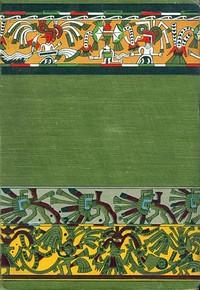|
|
Read this ebook for free! No credit card needed, absolutely nothing to pay.Words: 123613 in 26 pages
This is an ebook sharing website. You can read the uploaded ebooks for free here. No credit cards needed, nothing to pay. If you want to own a digital copy of the ebook, or want to read offline with your favorite ebook-reader, then you can choose to buy and download the ebook.

: Unknown Mexico Volume 1 (of 2) A Record of Five Years' Exploration Among the Tribes of the Western Sierra Madre; In the Tierra Caliente of Tepic and Jalisco; and Among the Tarascos of Michoacan by Lumholtz Carl - Mexico Description and travel; Indians of@FreeBooksTue 06 Jun, 2023 lly large woodpeckers, able to cut down whole trees; and that in its midst there are still existing numerous remains of a people who vanished long ago, but who once tilled the soil, lived in towns and built monuments, and even bridges over some of its ca?ons. This general ignorance is mainly due to the fact that until very recently this entire part of the sierra, from the border of the United States south about 250 miles, was under the undisputed control of the wild Apache Indians. From their mountain strongholds these marauders made raiding expeditions into the adjacent states, west and east, sweeping down upon the farms, plundering the villages, driving off horses and herds of cattle, killing men and carrying off women and children into slavery. Mines became unworkable; farms had to be deserted; the churches, built by the Spaniards, mouldered into decay. The raiders had made themselves absolute masters, and so bold were they that at one time a certain month in the year was set apart for their plundering excursions and called "the moon of the Mexicans," a fact which did not prevent them from robbing at other seasons. Often troops would follow them far into the mountains, but the "braves" fought so skilfully, and hid so well in the natural fortresses of their native domain, that the pursuit never came to anything, and the Mexicans were completely paralysed with fear. The dread of the terrible pillagers was so great that even at the time when I first went into the district, the Mexicans did not consider it a crime to shoot an Apache at sight. Such a scourge did this tribe become that the Governor of Chihuahua had a law passed through the Legislature, which put a certain price upon the head of every Apache. But this law had soon to be repealed, as the Mexicans, eager to get the reward, took to killing the peaceful Tarahumares, whose scalps, of course, could not be distinguished from those of the Apaches. It was not even now safe for a small party to cross the Sierra Madre, as dissatisfied Apaches were constantly breaking away from the San Carlos Reservation in Arizona, and no Mexican could have been induced to venture singly into that vast unknown domain of rock and forest, about which lingered such painful memories of bloodshed and terror. In the early part of our journey a Mexican officer had called on me to offer, in the name of the Governor of the State of Sonora, his services as escort and protection against the Apaches; but I declined the courtesy, preferring to depend rather upon my own men. I am happy to say that I had no personal encounter with the dreaded "Shis Inday," or Men of the Woods, as they call themselves, though on one occasion we came upon fresh tracks near one of our camps, and also upon small bunches of yucca leaves tied together in a peculiar way known to the Mexicans as signs intelligible only to the Apaches. The only precaution I had taken against possible attacks was to augment my force of trustworthy Mexican muleteers. Among the new recruits was an honest-looking Opata Indian, who joined the camp one evening, clad in the national costume of white cotton cloth, and carrying in his hand a small bundle containing his wife's petticoat and a pair of scissors. This was his whole outfit for a winter campaign in the Sierra Madre. They are hardy people, these Indians! This man told me that he was thirty years old; his "se?ora," he said, was twenty-five; when he married her she was fifteen, and now they had eleven children. Finally I succeeded in securing two guides. One of them was a very intelligent man, who had been several times in the sierra; the other one had been only as far as Chuhuichupa, and, although he did not remember the way very well, still he thought that with the help of the other man he would be able to make out the route. As we could do no better, we had to take him as the best guide available. After having received some supplementary provisions from Granados, I at last, on December 2, 1890, began the ascent. It was a beautiful day; the air was clear and warm and the sun shone bright, as it always does at this time of the year in this favoured region. The genius of spring seemed to hover about, and snow, frost and scarcity of grass seemed far removed contingencies. Everything looked promising. To reach the Sierra Madre from the Bavispe River by way of Nacori, two--or, as the Mexicans consider it, three--sierras have to be crossed, all running, generally speaking, in a northwesterly to southeasterly direction. The first two ranges are quite easy to climb. The third is the Sierra Madre proper, which the Mexicans here call Sierra de Nacori, as the upper Bavispe River from its source makes a great detour toward the north around it, thereby partly separating it from the main chain. Even this range does not really present any unsurmountable difficulties if the weather is fine; in bad weather, I admit, some parts of the trail we made would be all but impracticable. Having reached the second range called the Sierra de Huehuerachi, near its northern terminus, and looking backward, we see the Sierra de Bacadehuachi lying farthest to the west. On its eastern flank tower steep-tilted broken masses of conglomerate, and the frowning row of hog-backs just north and east of Nacori are only a continuation of that range. But looking east from where we were we obtained the first close view of the main range of the Sierra Madre . It rises bold and majestic on the opposite side of the valley, at the bottom of which runs the little river of Huehuerachi. We then went six miles further to the northeast. At first the trail followed the little river, whose clear and rapid water is about a foot deep and on an average six feet wide. Frequently its bed had to be cleared of palm trees to make it passable for the pack train, and big boulders and heavy undergrowth made travel rough. Then, ascending a cordon which led directly up to the main range, we followed for a while a dim trail on which the Apaches used to drive the herds of cattle they had stolen, and which is said to lead to a place so inaccessible that two Indians could keep a whole company at bay. The surface soil we had lately been travelling over was covered with boulders and fragments of conglomerate. Here, only twenty-three miles from Nacori, and at an elevation of 4,000 feet, we were obliged to make camp for three days. Dense fogs and occasional hard showers made travel impossible. Besides, our principal guide, Agustin Rios, became dangerously ill. He was sixty-five years old, and I decided to send him back. When I hired him I had not been aware that he was afflicted with an incurable disease, and that on this account his wife had tried to keep him at home. Now he had to be carried on a sort of palanquin constructed for the occasion, and I regret to state that he died before he reached his home in Nacori. He had been a reliable man, and his loss was very deplorable. Free books android app tbrJar TBR JAR Read Free books online gutenberg More posts by @FreeBooks
: Some Christian Convictions A Practical Restatement in Terms of Present-Day Thinking by Coffin Henry Sloane - Theology Doctrinal Popular works; Christianity 20th century@FreeBooksTue 06 Jun, 2023

: A Coal From The Altar To Kindle The Holy Fire of Zeale In a Sermon Preached at a Generall Visitation at Ipswich by Ward Samuel - Sermons English 17th century; Bible. Revelation III 19 Sermons; Piety Sermons Christianity@FreeBooksTue 06 Jun, 2023
|
Terms of Use Stock Market News! © gutenberg.org.in2025 All Rights reserved.






